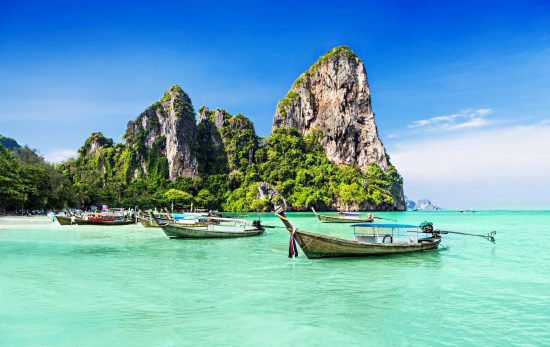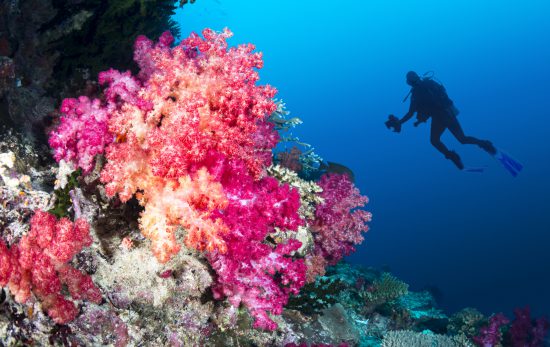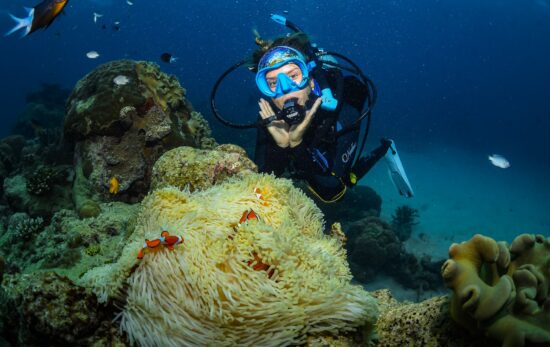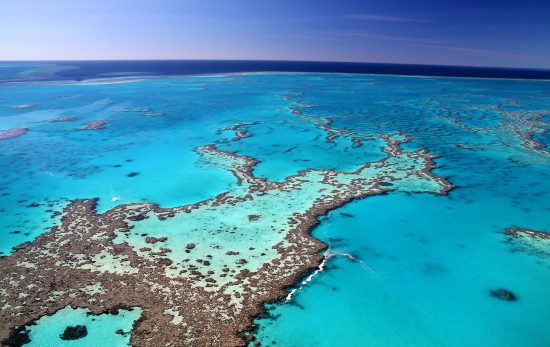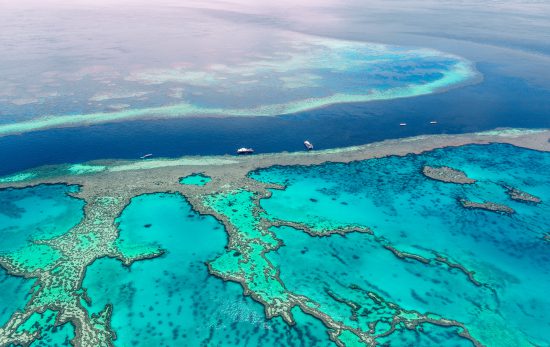When you are thinking about tropical scuba diving in Australia, a few famous names come to mind. Airlie Beach, Hamilton Island, and Hook Island are all names that scuba divers may have heard of. But did you know that these names are all part of a group of 74 islands? The Whitsunday Islands!
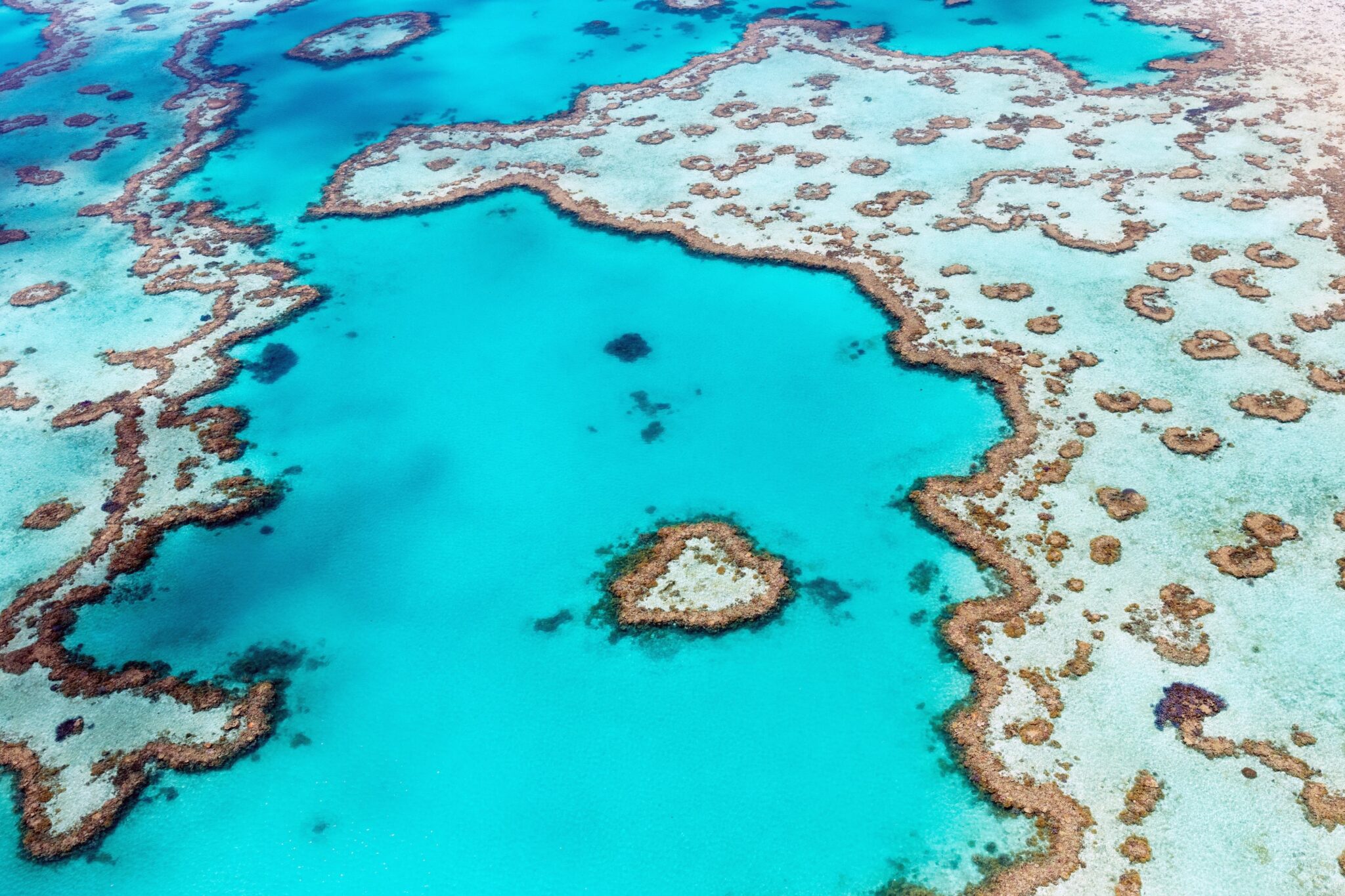
The Islands
The Whitsunday Islands form an archipelago located just 55 kilometers (34 miles) off Queensland, next to the Great Barrier Reef. The islands have garnered world fame for their white sand beaches, vibrant coral reefs, and (more recently) luxury five-star resorts.
This tiny archipelago delivers on big promises – excellent visibility and plankton-rich waters that attract a wealth of marine life. You can expect to see everything from a range of tiny macro critters through to impressive pelagics, including manta rays.
It’s no wonder that scuba divers from around the globe have the Whitsunday Islands on their bucket lists. If you want more reasons to visit the Great Barrier Reef area, check out the Blog, ‘Why you must experience the Great Barrier Reef.’
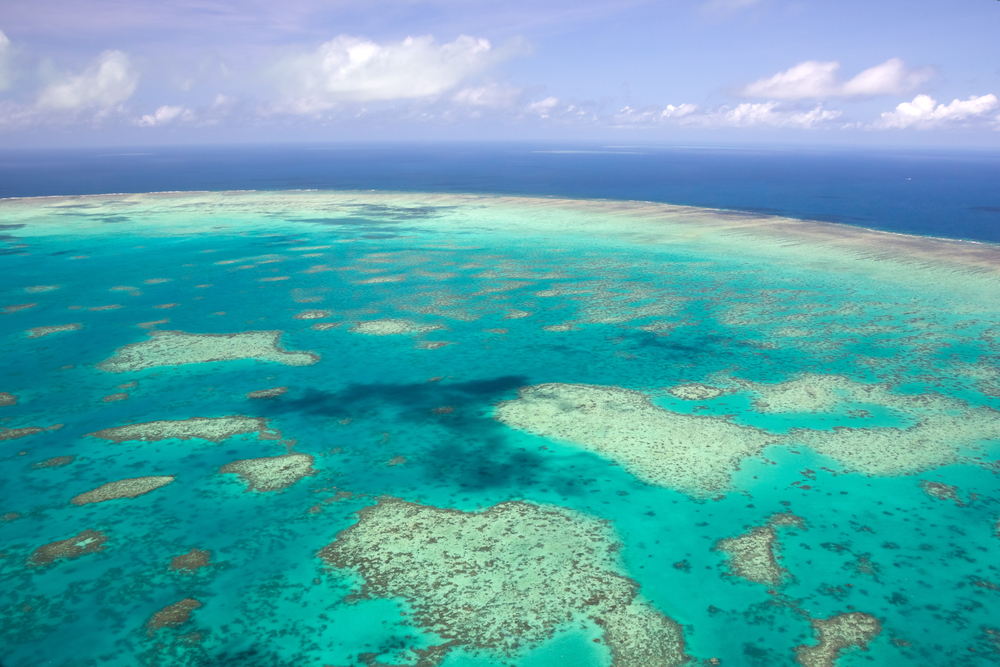
How to Reach the Whitsunday Islands
You can get to the Whitsundays via sea, road, and air. There are 2 airports servicing the area, a cruise terminal, rail stations, and some fantastic scenic roads through Queensland. There are options for every timescale, budget, and travel preference.
The Whitsunday Islands are serviced by the Great Barrier Reef Airport and Whitsunday Coast Airport. The Whitsundays Coast Airport is the primary gateway to the region, while the Great Barrier Reef Airport is the access point to the islands.
There are also 2 light plane airports situated at Shute Harbour and Lindeman Island. Direct services operate from Cairns, Brisbane, Sydney, and Melbourne, with domestic and international connections via Brisbane, Sydney, and Cairns airports.
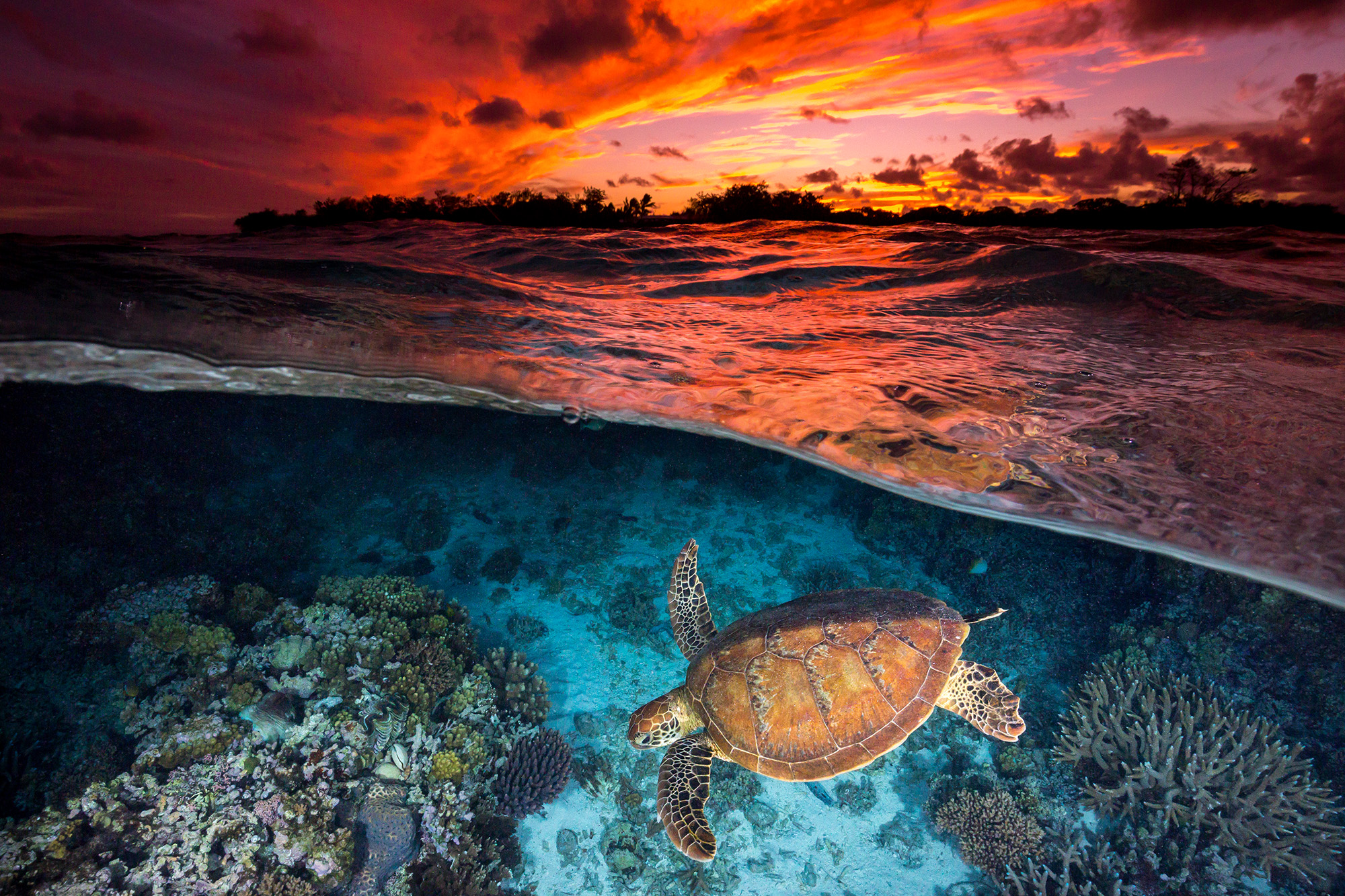
When To Dive the Whitsunday Islands
One of the advantages of the Whitsunday Islands is that they offer year-round diving. If bad weather does occur, it’s possible to move around an island to the more sheltered side. There are plenty of coves, and it’s not usually challenging to find calmer waters. Water temperatures vary from season to season, with the coolest temperature from May through to September. During this period, you are most likely to encounter manta rays and other pelagics.
Difficulty Level
The Whitsunday Islands offer something for every level of diver due to the diverse conditions that are on offer. From sheltered coral reefs to challenging swim throughs, there are sites suitable for beginners and more challenging sites. You’ll have the opportunity to explore incredible coral gardens, drop-offs, and sloping reefs. You can even follow the Ngaro underwater trail of marine life sculptures!
If you are a PADI Open Water Diver, the Whitsunday Islands are a great destination to take your PADI Advanced Open Water Diver Course. You’ll be able to explore more dive sites as you’ll be certified to dive to 30 meters/100 feet!

Dive Sites you Don’t Want to Miss
- The Pinnacles (Hook Island)
This is a firm favorite dive site for many regular Whitsunday Islands divers. The ’pinnacles’ are a series of large coral bommies extending upwards from 20 meters/65 feet to just beneath the water’s surface. The pinnacles attract a vast amount of marine life, and they are bursting with the vibrant colors of the corals that adorn them. During the cooler months (May to September), there is a good chance of seeing manta rays, Maori wrasse, and white tip reef sharks.
- Dolphin Point (Hayman Island)
This site has a unique topography popular with scuba divers and large marine species! The sloping seabed is littered with boulders and coral bommies. It’s not uncommon to spot an occasional hammerhead weaving its way around the boulders. Whitetip reef sharks are also often spotted resting underneath ledges and at the base of the boulders. Other marine life highlights here include tuna, barracuda, and schools of mackerel.
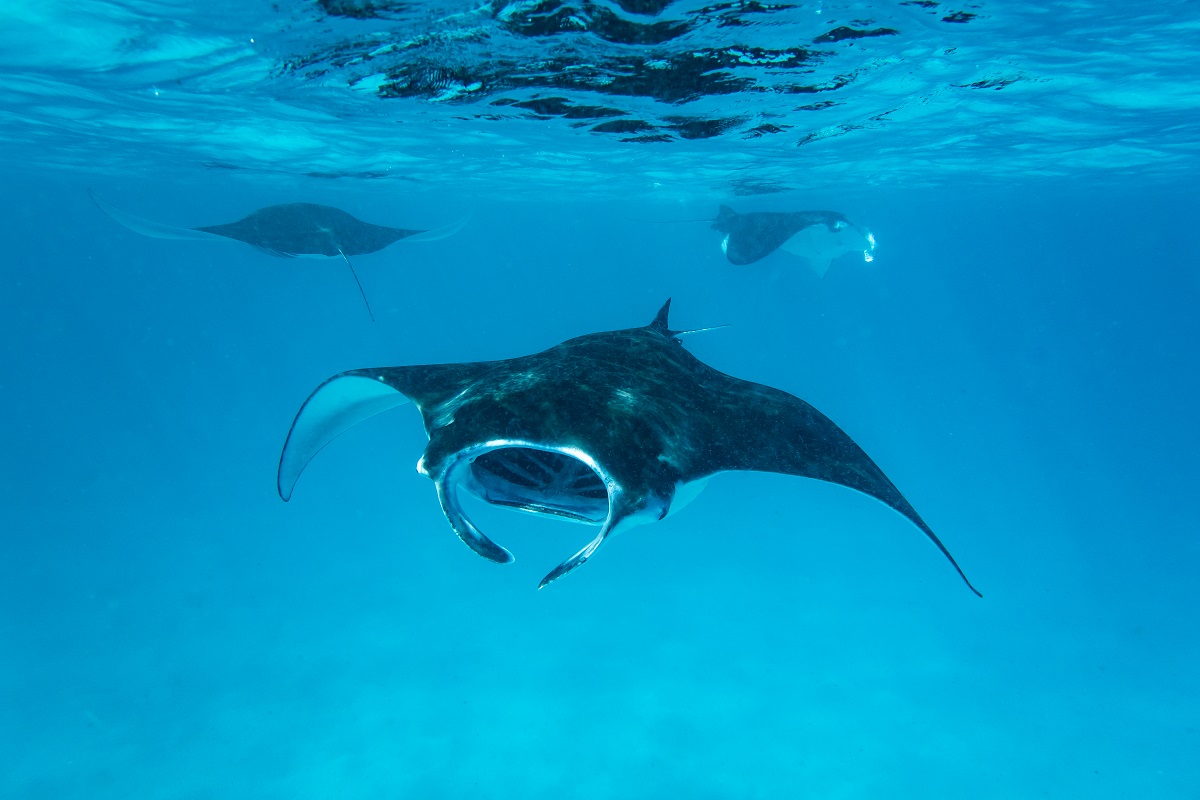
- Manta Ray Bay
This is probably the most famous of all the dive sites in the Whitsunday Islands. As the name suggests, this is a hotspot for manta rays most seen here between May and September. This is still an excellent dive site when the manta rays are not present. Batfish, coral trout, and parrotfish are just a few among the myriad of tropical fish species you can encounter. This is also an interesting site with swim-throughs and channels to explore topography-wise.
- The Hangover
This dive site is worth a mention as it is located off Airlie Beach, making it easy to access. This is also a less costly dive than those that are further afield and require long boat rides. The Hangover is an amazing wall dive site. Offering a mixture of hard and soft corals and a wide array of marine life. Highlights here include the chance to see giant trevally, barramundi, cod, and mackerel.

- Ngaro Underwater Marine Sculpture Trail
This unique trail of sculptures was created in 2017 after cyclone Debbie caused damage to the Whitsundays Islands and coast. The objective of the Whitsunday Reef Recovery and Public Art Project was to assist in the recovery of the area. This was created with input from the local government, indigenous communities, and tourism bodies.
The trail features a 6 meter/19 foot ‘Turtle Dream’ sculpture by artist Col Henry. A 2 meter/6.5 foot ‘Migration of the Mantas’ by Indigenous artist Brian Robinson. A 3.8 meter/1.1 foot ‘Manta Ray’ and a 3.85 meter/12.4 foot ‘Maori Wrasse’ by local artist Adriaan Vanderlugt. Swimming from sculpture to sculpture is a lot of fun – and there are some unusual underwater photography opportunities!
- The Cathedral
The Cathedral is a stunning dive site that features a collection of large coral bommies, coral outcrops, and adrenaline-pumping swim-throughs. This is one of the Whitsundays’ most iconic sites as it offers a vast diversity of marine life. Critters, cryptic cephalopods, and some of the larger species are often spotted in this area. You won’t be disappointed!
Are you now feeling the urge to pack up your gear, travel, and start exploring underwater in the Whitsunday Islands? Take a look at all the liveaboard options on PADI Travel!

